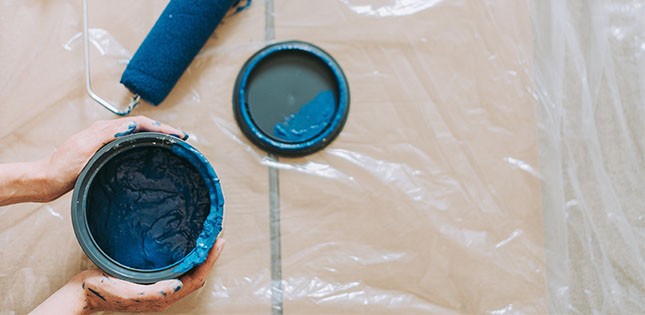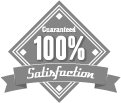
Traditional paints are those paints which were used for internal and external painting mainly between the late 17th and the early 20th centuries.
The traditional painting procedures comprise of applying oil paints to timber, metal and plaster and the application of water-based washes and distempers to plasters and some masonry surfaces. On giving the attractive painting treatments graining and marbling, stencilling and gilding were used.
These are basically solvent-based paints and are a source of potentially hazardous emissions called VOCs. On evaporation, the solvents contained in paint give off VOCs which can emit toxic fumes and gases in the air for years.
The type and extent of VOCs in a traditional household paint normally varies with the type and brand of paint. Exposure to VOC’s present in traditional paints can trigger respiratory problems, asthma attacks, eye irritation, headache, nausea and prolonged exposure can even result in kidney and liver disease and even cancer.
VOCs exposure is a matter of concern in particular for the homes having pregnant mothers, babies, children and especially the families with respiratory issues.
Traditional paints have three main families: lime wash, distempers and oil paints
Lime wash: Lime is the basic material used for a lime wash. The lime is derived from limestone or chalk which is burnt in a kiln and is then slaked by adding water. This lime is usually kept in the wet form and is commonly known as lime putty. To prepare lime wash, lime putty is diluted with water to form a thin paint. To improve the properties of lime wash Tallow and alum are added and colouring agents like earth pigments are added.
Distemper: Distemper is generally produced from powdered chalk or lime and size (a gelatinous substance) such as rabbit skin glue. Synthetic glues like polyvinyl acetate and polyvinyl alcohol can also be used in place of animal glue. Sometimes toxic white lead is also used as an alternative to chalk.
Oil Paints: Linseed oil is normally used in oil paints. It is yellow in colour, so for light delicate shades, other oils like walnut or poppy seed are used. These are all ‘drying oils’ and drying processes can be accelerated by the addition of driers, notably litharge or lead monoxide. Grinding the white lead with linseed oil created ‘lead soap’, which is an exceptionally flexible and adhesive coating. Oil paints, in general, have over 80% white lead.
How was paint applied?
Traditional Paints were applied by brush.
The first step was to clean all surfaces to make them dust free. Then any visible cracking, peeling, or blistering was removed. For painting the external building material, one or two coats of paints were applied directly by brush whereas, for painting wood surfaces, primers and undercoats are applied before the final coats. For painting internal plaster walls, many coats of oil paint were applied, as the plaster used to soak up the first coats of paint. The final coat was smoothened by turpentine and stippled with a unique brush to level out the brushstrokes.
Disadvantages of traditional paints:
- According to the Environmental Protection Agency, around 9% of the airborne pollutants creating ground-level ozone come from the VOCs in the paint. Low and zero VOC paints have little or no smog-forming emissions.
- Traditional paints are full of VOCs, the chemicals that become breathable gases at room temperature. They may contain benzene, vinyl chloride, formaldehyde, ethyl and mercury. Some petrochemicals and other dangerous chemicals are also present which are known to outgas in significant amounts. Cadmium and chromium are frequently found in the pigments used in traditional paints.
- VOCs exposure through traditional paints can cause a lot of health problems like irritation in eyes, nose and throat, headache, allergic skin reaction, declines in serum cholinesterase levels, nausea, vomiting, nosebleeds, fatigue, and dizziness. Prolonged exposure can also lead to muscle weakness and liver and kidney damage and even cancer.
- VOCs are unstable and are carbon-containing compounds. These VOCs can easily vaporize into the air and this reaction results in the formation of ozone, which causes air pollution and many other health problems.
- VOC emissions from the paint can last up to even 5 years after painting.
Health Effects of Traditional Paints
Traditional paints are applied wet and needs drying process. During the drying process, a chemical reaction takes place and during this chemical reaction, VOCs and other paint components are given off. These VOCs have the tendency to evaporate readily at room temperature. These VOCs are present in all oil-based paints as solvents. However, some latex paints having water as the solvent also contain VOCs as part of their paint chemistry.
VOCs released may cause a variety of health problems. This includes dizziness, eye irritation, respiratory tract, and nausea. More serious illnesses including heart, lung or kidney damage and even cancer can occur. People with chemical sensitivities, asthmatics, young children, pregnant ladies and the elderly are more susceptible to these effects. As per studies, exposure to paint fumes during pregnancy may increase the risk of miscarriage and birth defects. A prolonged exposure during the first trimester may lead to an even higher risk of miscarriage.






